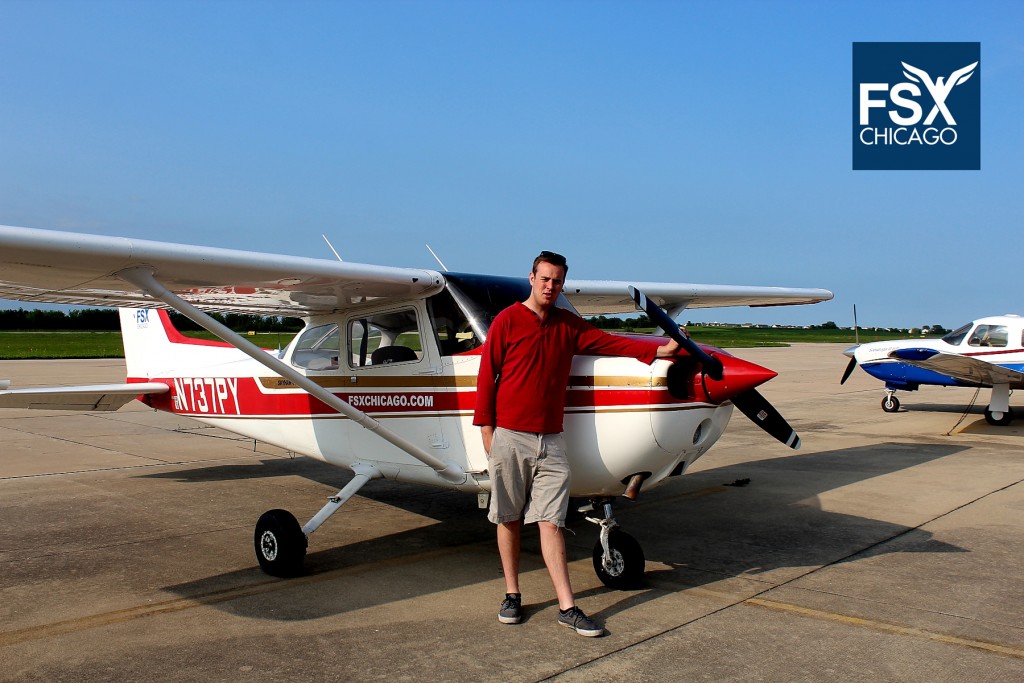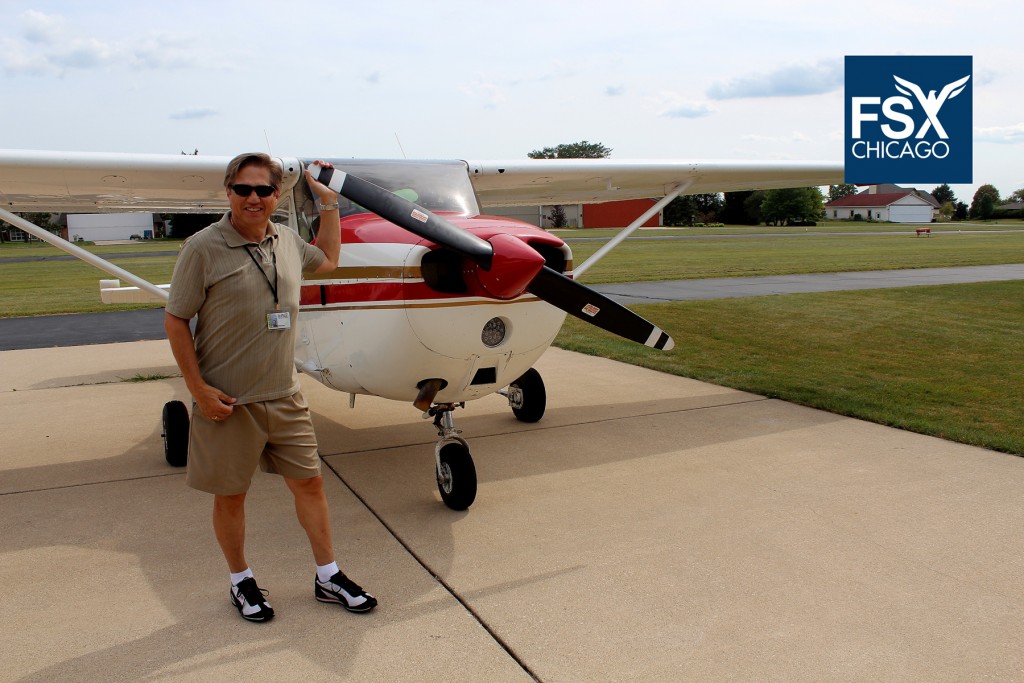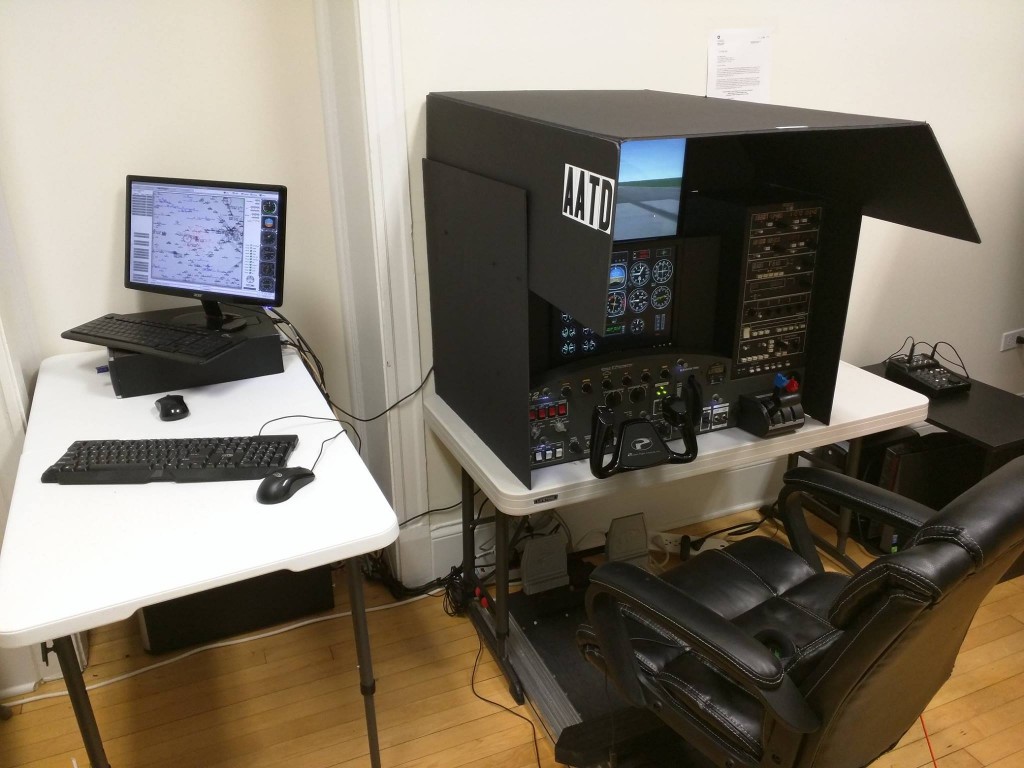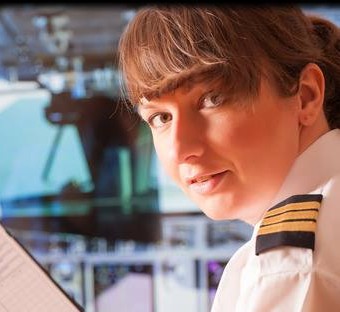The time duration of obtaining a private pilot license depends on student schedule and proficiency. Flying often, studying frequently and efficiently and being prepared for each flight lesson will ensure that the goal is achieved at a lower cost and within the minimal time-frame. The average amount of time to obtain an initial pilot license ranges from 6 to 18 months.
(Faster programs are available – PPL in 120 days)
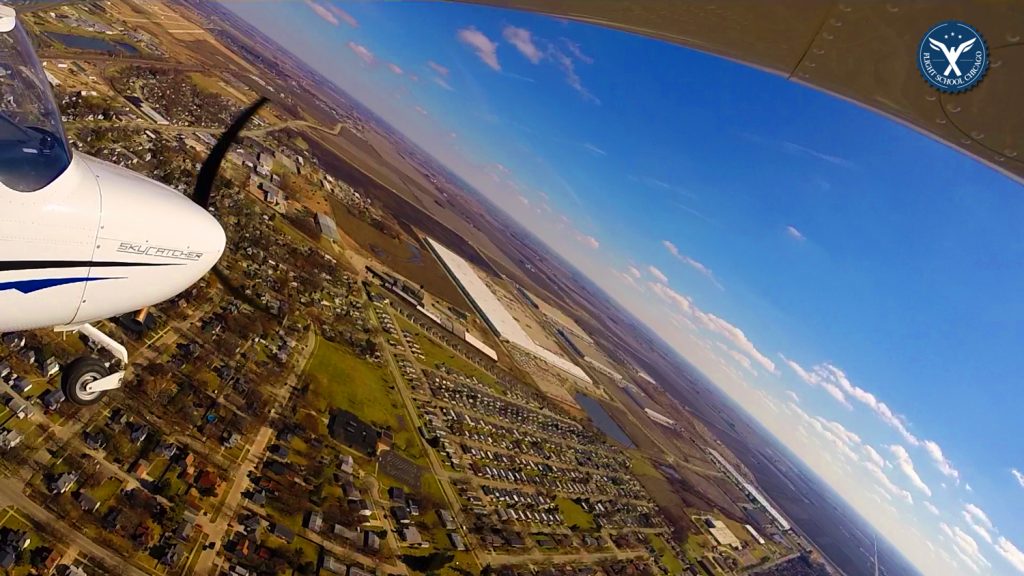
FSX Chicago
Private Pilot License
FAA Requirements to Obtain a Private Pilot Certificate – In detail:
The Federal Aviation Regulations (FARs) identify the following requirements to obtain a Private Pilot Certificate:
1. Be at least 17 years of age
2. Be able to read, write, and converse fluently in English
3. Obtain at least a third-class FAA medical certificate
a. You must undergo a routine medical examination which may be administered only by an
FAA-designated doctor called an Aviation Medical Examiner (AME)
b. Even if you have a physical handicap, medical certificates can be issued in many cases.
Operating limitation may be imposed depending on the nature of the disability.
c. Your FAA-Certificated Flight Instructor (CFI) or Fixed-Base Operator (FBO) will be able to recommend an AME. [NOTE: An FBO is an airport business that gives flight lessons, sells
aviation fuel, repairs airplanes, etc.]
d. As a student pilot, your medical certificate also functions as your student pilot certificate once it is signed by you and your AME.
4. Receive and log ground training from an authorized instructor or complete either an online study course or home-study course to learn the following:
a. Applicable Federal Aviation Regulations that relate to private pilot privileges, limitations, and flight operations
b. Accident reporting requirement of the National Transportation Safety Board
c. Use of applicable portions of the Aeronautical Information Manual (AIM) and FAA Advisory Circulars (ACs)
d. Use of aeronautical charts for navigation under Visual Flight Rules (VFR) using pilotage, dead reckoning, and navigation systems
e. Radio communication procedures
f. Recognition of critical weather situations from the ground and in flight and the procurement and use of aeronautical weather reports and forecasts
g. Safe and efficient operation of the aircraft
h. Effects of density altitude on aircraft takeoff and climb performance
i. Weight and balance computations
j. Principles of aerodynamics, aircraft engines and systems
k. Stall awareness and recovery techniques
l. Aeronautical decision making and judgment
m. Preflight actions including:
i. How to obtain information on runway lengths at airports of intended use, data on takeoff and landing distances, weather reports and forecasts, and fuel requirements
ii. How to plan for alternatives if the flight cannot be completed or delays are encountered
5. Pass a 60 multiple-choice question knowledge test, at an FAA-designated computer testing center, with a score of 70% or higher
6. Accumulate flight experience (FAR 61.109). Receive a minimum of 40 hours of flight instruction and solo flight time including:
a. 20 hours of flight training from an authorized flight instructor, including at least:
i. 3 hours of cross-country (i.e. to other airports)
ii. 3 hours of night, including
1. One cross-country flight of over 100nm total distance
2. 10 takeoffs and 10 landings to a full stop at an airport
iii. 3 hours of instrument flight training in an airplane
iv. 3 hours in airplanes in preparation for the private pilot practical test within 60 days prior to that test
b. 10 hours of solo time in an airplane, including:
i. 5 hours of cross-country flights
ii. One solo cross-country flight of at least 150nm total distance, with full-stop landings at a minimum of three points and with one segment of the flight consisting of a straight-line distance of at least 50nm between takeoff and landing locations
iii. Three solo takeoffs and landings to a full stop at an airport with an operating control tower
7. Receive flight instruction and demonstrate skill (FAR 61.107)
a. Obtain a logbook sign-off by your CFI on the following areas of operation:
i. Pre-Flight preparation
ii. Pre-Flight procedures
iii. Airport operations
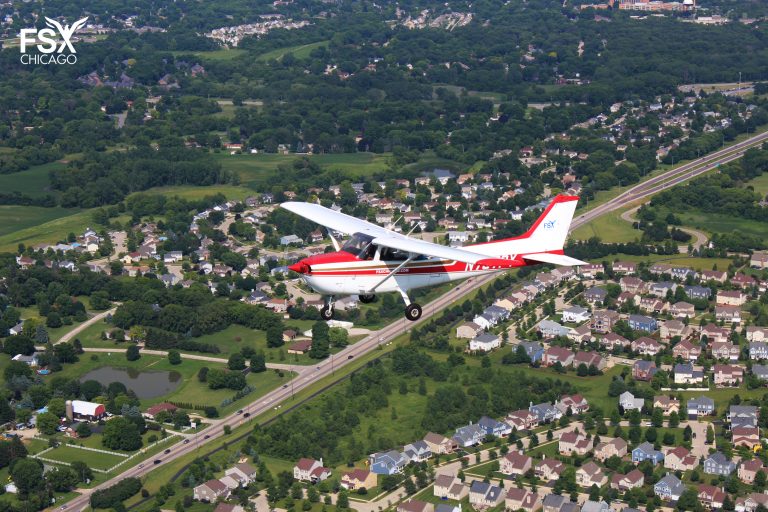
iv. Takeoffs, landings, and go-arounds
v. Performance maneuvers
vi. Ground reference maneuvers
vii. Navigation
viii. Slow flight and (aerodynamic) stalls
ix. Basic instrument maneuvers
x. Emergency operations
xi. Night operations
xii. Post-flight procedures
8. Successful complete a practical (flight) test given as a final exam by an FAA inspector or Designated Pilot Examiner (DPE); conducted as specified in the most current version of the FAA’s
Private Pilot Practical Test Standards (PTS).
Call 708-299-8246 today!!
Take advantage of our Motion Simulator to practice Crosswind Landings, Instrument approaches, Landings at Unfamiliar Airports, Emergencies, etc.

Ground School FSX Chicago – Seminars
For the experienced pilot, we offer BATD’s – FAA approved for training and logging up to 10 hours towards Instrument Rating certification and AATD’s allowing up to 50 hours towards a commercial license. High precision Aircraft control yoke, rudder and control panel. Realistic feel and response.
INSTRUMENT RATED PILOT:
Need an IPC? Instrument Proficiency Checks done at our Flight Center. (read more about IPC’s here). You can choose between our Advanced Aviation Training Device or our Cessna Training Aircraft. Call 708-299-8246 to schedule your IPC today!
The active VFR Pilot:
Use our sims or our intructors to practice:
a. VFR flight to an unfamiliar airport.
b. EMERGENCIES – best method to practice engine failures and equipment failures, partial panel, partial power, electrical failures, etc.
c. VFR flight into IMC and techniques to get-a-way and be safe!
d. Pilotage – based on photorealistic maps.
e. Pattern work, xwind landings.
f. General refresher course for all PPL requirements.
The “Rusty” VFR Pilot
The perfect way to get back in aviation. Get a few hours in the training device and all will start coming back. You do this at a FRACTION of the price of renting an aircraft. You can do it yourself or with one of our instructors or with your own instructor in some cases.
Procedures, Emergencies, Stalls, Steep Turns, Pattern Entry, Uncontrolled Airports – All can be accurately recreated in our simulated environment – where you will FEEL and actually fly an aircraft!
For BFR’s – Flight Reviews – call 708-299-8246 and schedule Ground and Flight with our experienced flight instructors today!
For “Rusty” Pilots our Cessna training center is one of the best possible ways of getting back into Aviation. In less than two hours – without even leaving the ground – you will re-connected with aviation including all the procedures and maneuvers required for a successful Flight Review leaving the flight itself to be fun and enjoyable!
For the “Rusty” Instrument Pilot in need of an Instrument Proficiency Check we offer our experienced instructors in the AATD or our aircraft.Call 708-299-8246 and schedule your IPC with one of our FSX Chicago CFII today!
Schedule your BFR at 708-299-8246.
